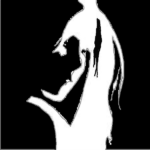You might be surprised to learn this, but waxing is big business – very big business. Around the world, we spend billions on hair removal every year. In the US alone, hair removal is worth over $2 billion.
You might think that women are responsible for the industry’s growth. They are, but so are men. In recent years, more and more men have begun to invest time and money in grooming. Some estimates suggest that around 20 percent of hair removal customers are men. Nearly half of them have hair waxed from their backs and shoulders.
There is also a preference for smooth bodies in certain sports. Cyclists, body builders and swimmers often remove all, or most, of their body hair.
Male grooming fell out of fashion during the 20th century, but human beings – both male and female – have always beautified themselves. Let’s take a quick look at the history of waxing.
Hair removal in the ancient world
It is thought that women in ancient Egypt removed most, if not, all of their body hair. That includes the hair on their heads. They used a number of methods, including tweezers and pumice stones (ouch)! However, they also used some of the earliest known hair removal waxes, including beeswax and sugar-based waxes.
People did not necessarily remove hair in order to look good. Hair removal got rid of lice and fleas. In addition, it cut down on body odour.
In the Roman Empire, hairlessness was associated with cleanliness – and class. Wealthy women were not supposed to have body hair. One popular method of removing hair was tree sap. Thankfully waxing has come a long way!
Depilation in contemporary times
Waxing may not be new. However, many of the products and formulas we use today are. The first commercial waxes became available in the 1930s. These were tricky to manage by yourself. However, they were popular and widely used because they gave longer lasting results than shaving.
Wax strips have been around since the 1960s. Luckily, their effectiveness has improved immeasurably over the decades since then.
There lots of waxing options for those who prefer to groom at home. However, very many people prefer a professional wax. A beautician with skills and experience will generally give you a neater and less painful experience.
Waxing courses
Make-up and skin care courses are often available for hobbyists. However, waxing courses tend to restricted to beauticians and beauty students. A basic waxing course will teach students how to wax the most common areas. These include leg, underarm, bikini line, lip, chin, and eyebrows. Specialised courses will teach challenging waxes, such as the Brazilian and Hollywood styles. Some courses will focus on hot waxing as this is the most popular method. Others will also look at cold waxing and sugaring.
Beauty therapy courses cover waxing, and there are specialist courses available. For more information, check out the full list of beauty courses here.

















